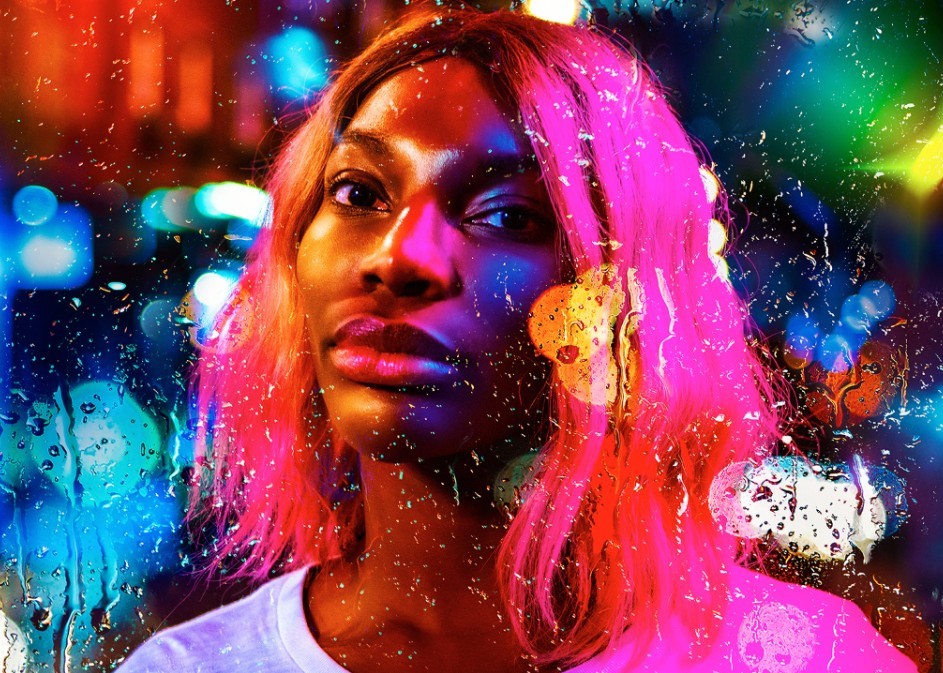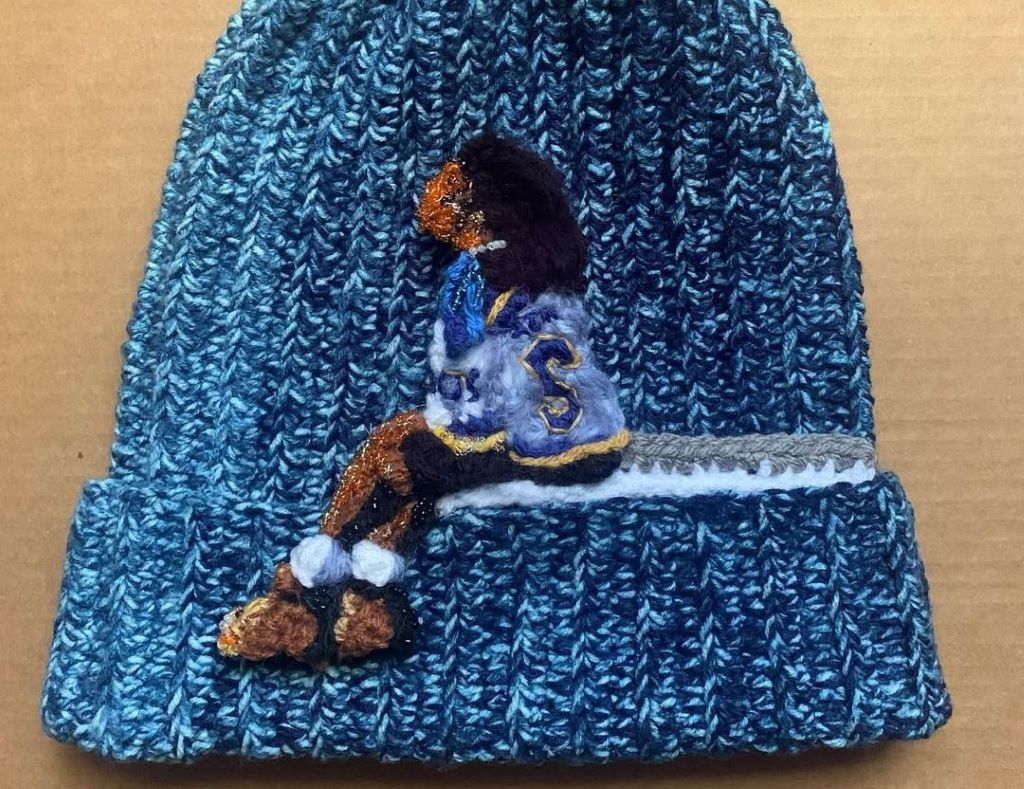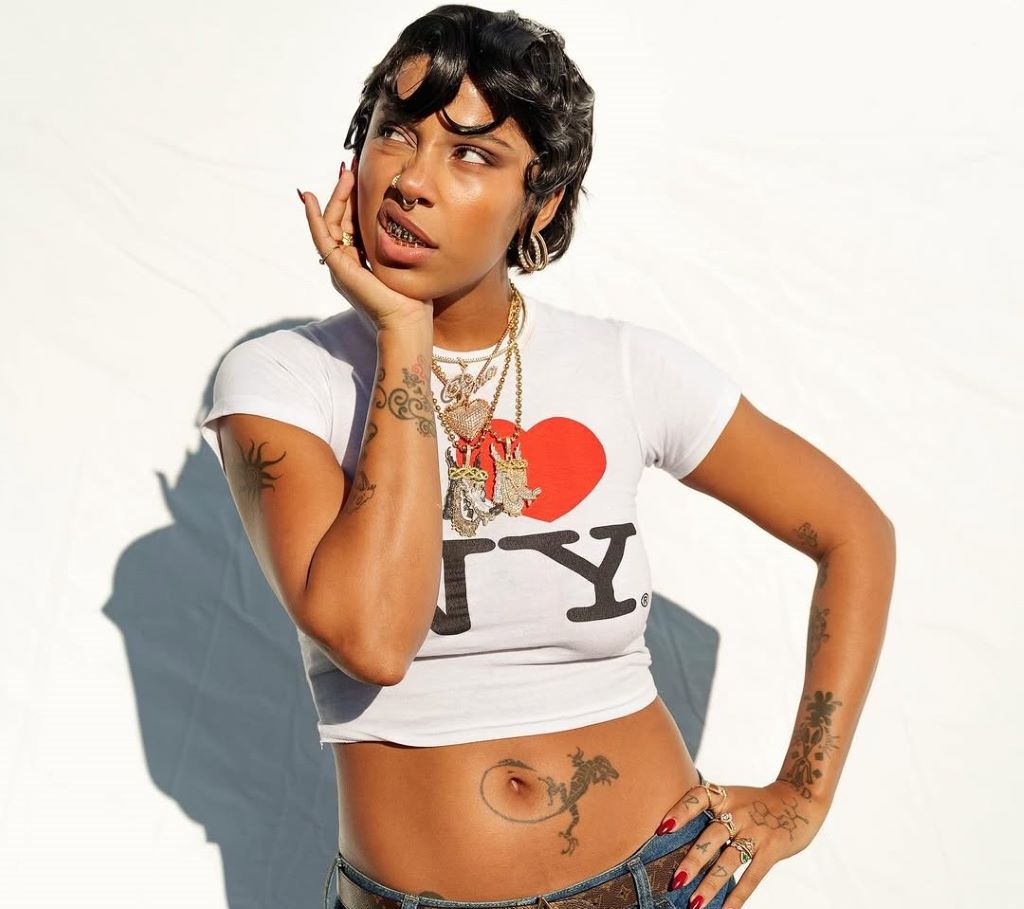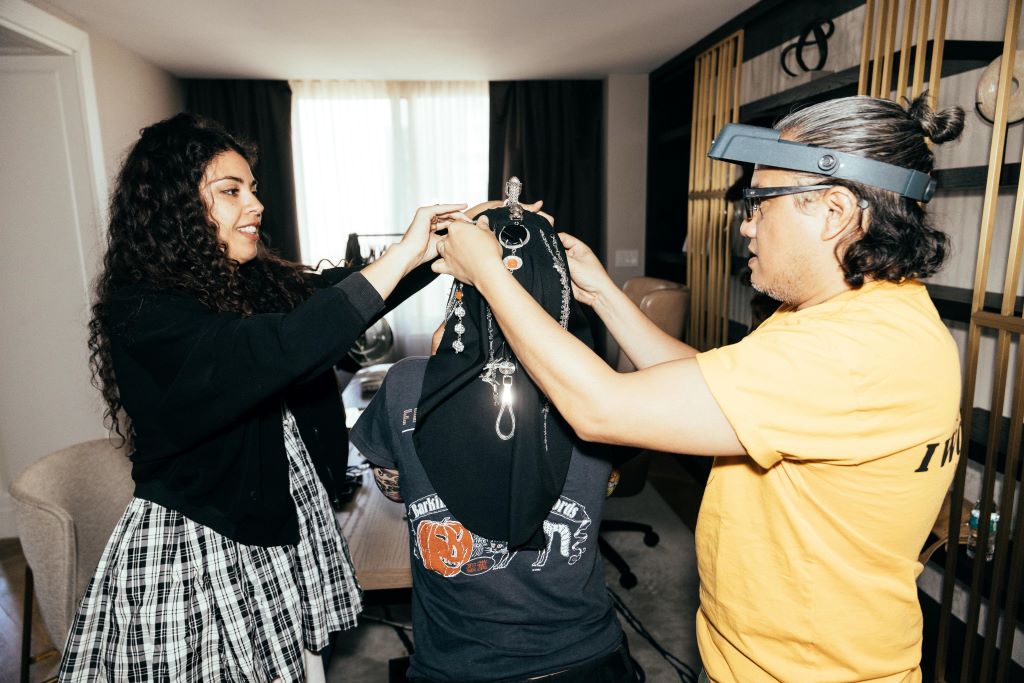HBO’s drama “I May Destroy You” has been winning rave reviews for Michaela Coel‘s acting and deeply nuanced story telling It’s a depth that extends to the casts’ wardrobe, which plays the essential role of adding even more nuance to a story that’s as much about human complexity as it is the thorny topic of consent.
The show’s costumes (which included 120 characters) are handled by Dartford, England-born Lynsey Moore, a graduate from the London College of Fashion with a degree in Costume for Performance.
While she graduated just 10 years ago, Moore boasts over 33 production credits and was selected for “I May Destroy You” following her role as the costume designer for “Chewing Gum,” a comedy that also stars and was written by Coel.
As is often the case with creatives, talent shows itself at a young age with Moore recalling an obsession with her outfits from the time she was a toddler. From an early age, she had a mentor in her grandmother, a seamstress who worked as part of a team creating costume for London’s famed West End productions.
We spoke with Moore last week about all that went into directing costume design for “I May Destroy,” including hidden messages conveyed through costumes and an ongoing theme of the series. Check it out below.
SNOBETTE: You’ve worked on a lot of projects. On IMDB, I count over 30 productions.
LYNSEY MOORE: “Yea, pretty much I’ve always worked. I didn’t come from a wealthy family. I’ve had a job since 15 starting with a job at Harvester washing dishes and clearing tables. My first fashion job was as a costume designer trainee for “Waking the Dead,” a BBC crime drama.”
SNOBETTE: As accomplished as you are, is there someone in your family that encouraged your interest in fashion?
LYNSEY MOORE: My nan, Rosemary, was a theatrical costumier who made the costumes for the West End productions. She taught me to sew from age six or seven. I was obsessed with clothes early on, from age one or two I had very strong opinions about my outfits.”
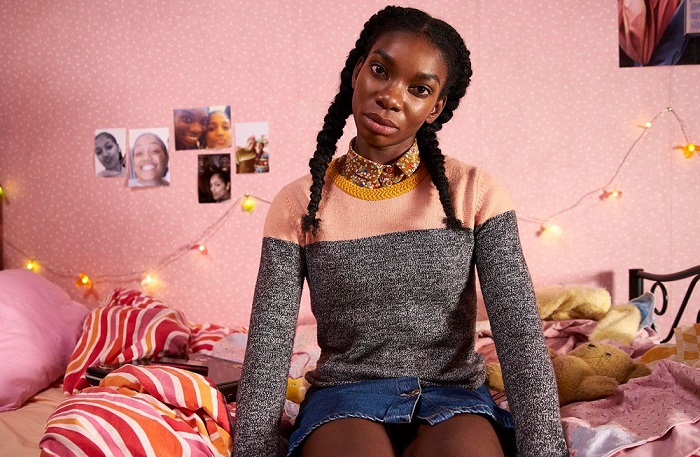
SNOBETTE: You worked with Michaela Coel on the comedy “Chewing Gum,” whereas “IMDY” is a drama. How did you convey the different moods of the two series through costume?
LYNSEY MOORE: “‘Chewing Gum’ was a coming of age series that centered on young characters still living at home with their parents on a council estate. The tone of the costumes needed to be youthful so I used a candy colored colour palette, fun prints, playful pieces of clothing and bright pops of color to translate that visually on camera.
“‘IMDY’ is tonally completely different. The characters are older and are exploring a different stage of their life. For this reason, I opted for a richer color palette, and less cartoon-ey prints. The overall look is much more grown up although there are also experimental looks and playful pieces that reflect Arabella and Kwame’s interest in expressing their style. ‘IMDY’ has been described as a dark comedy though there’s more drama than comedy. Michaela could never create a drama that is totally serious.”
SNOBETTE: You’re a big fan of sourcing looks through vintage. As popular as vintage is these days, what is the current state of the market in terms of availability and pricing?
LYNSEY MOORE: “It’s becoming harder and harder to find bargains. We have charity shops, and I love going to them and finding the complete gem. There’s a lot of rubbish but also a lot of good stuff. My goal when I go vintage shopping is always to find things that are different and interesting. If it’s on the line between brilliant and ugly, I buy it! It can become something amazing.”
SNOBETTE: What are the hot items in vintage at the moment.
LYNSEY MOORE: “Western stuff, which you can’t find much of here. It’s very pricey. Also prairie dresses are quite popular, especially ones by Laura Ashley.
SNOBETTE: You’ve worked on a lot of shows. How do you catalog your collections?
LYNSEY MOORE: “It depends on the production. Everything that’s bought belongs to the production company. Storage in London is expensive so they usually only retain the main character’s costumes. I have to be careful with how much I take home. I have a 75 square foot storage space, I would like a whole barn, but it’s not possible. I try to keep the one of a kind vintage pieces, I’ll never find again.”
SNOBETTE: How was your method of organization and working challenged when you shot “IMDY” on location in Italy?
LYNSEY MOORE: “Beside panicking you left something in London, you just get on with it. Going to Italy was wonderful. We had an amazing team in Italy who made it a seamless transition. It’s only an hour difference, our phones all work there, it’s a very easy transition.”
SNOBETTE: You also mix in items from fast-fashion retailers reflecting where young people like Arabella (Michaela Coel) and her peers often shop. How do you mentally balance presenting reality versus succumbing to bad press about fast fashion?
LYNSEY MOORE: “It’s a tricky one. I feel conflicted. My job is portraying the character and I believe in doing that realistically. I always design costumes that are grounded in reality in order to create recognizable people. I ask myself where they would shop and what they can afford and in this case the answer is the High Street.
“Sometimes budget and time are a constraint too and I have to find an option that is both feasible and available. A lot of pieces on ‘IMDY’ are from my own wardrobe. As much as I can, I use second hand clothing, as it often looks more lived in and real on camera, as well as being sustainable. After filming has wrapped, we donate everything we can to charity or reuse on other shows.”
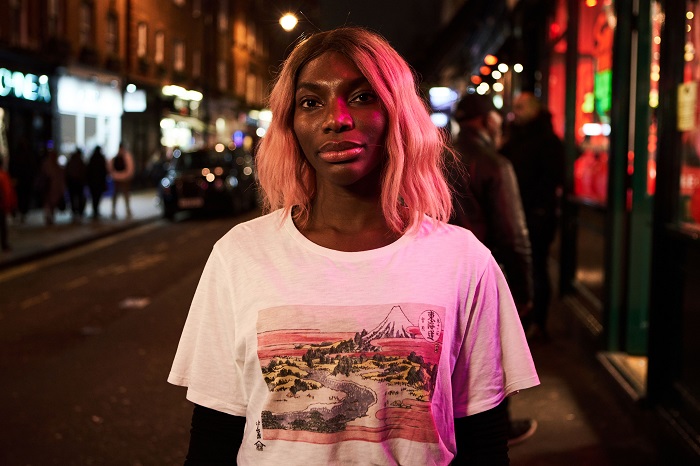
SNOBETTE: T-shirts are a big fashion statement for Arabella. What is her taste in t-shirts?
LYNSEY MOORE: “Arabella’s style is very difficult to explain. It changes a lot. I can’t put my finger on it. She’s bold and punky and likes to wear statement pieces. Her t-shirts don’t necessarily have much of a meaning behind them, I just saw them and instinctively recognized them as hers. The t-shirt designs were selected for their visual impact on camera and were tonally chosen to complement the hair color.”
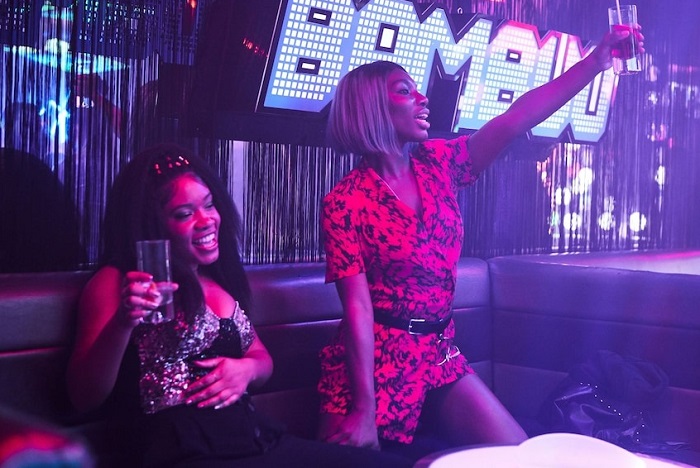
SNOBETTE: What percentage of the time are your costume choices are informed by a wish by the writers to send a specific message? I’m thinking for example of the choice in episode three to put Arabella in a dress that’s red, a color often used to foreshadow events.
LYNSEY MOORE: “I would say 50 percent of the time. I always work closely with the script. The red dress was originally a playsuit but because it’s scripted that she pees in the street, it needed to be altered into a dress. I saw it in Zara and knew it was perfect.
“The red color wasn’t so much about foreshadowing but about creating a bold iconic look for Arabella. The combination of the red with the purple wig achieved this. The goal was for Arabella and Terry to stand out and look striking in comparison to the local people around them.”
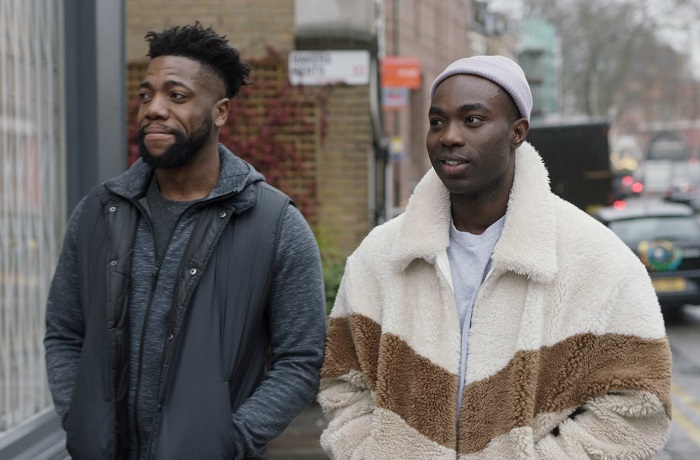
SNOBETTE: Arabella and Kwame (Paapa Essiedu) both are going through a deep examination of selves following their assaults. How do you express the roller coaster of emotions they’re experiencing through clothing?
LYNSEY MOORE: “Kwame is private about [his assault in episode four]. After it happens, not much changes in his wardrobe. As it starts to affect him, his wardrobe choices shift from the playful jacket [a woman’s fleece jacket from BooHoo] to a more grown up pieces following a subdued color palette, such as what he wears on his date [in episode seven]. Overall however, the changes to his wardrobe were much more subtle.
“Arabella is all about how she presents herself to the world. She’s going through this public journey: trying yoga, painting graffiti, and her changes are much more visual, which feels appropriate for her character. She always dressed right for the occasion. Even her choices of outfits for yoga are examples of her conscious styling. It may look like she’s throwing something on, but she’s always aware of what she’s doing.”
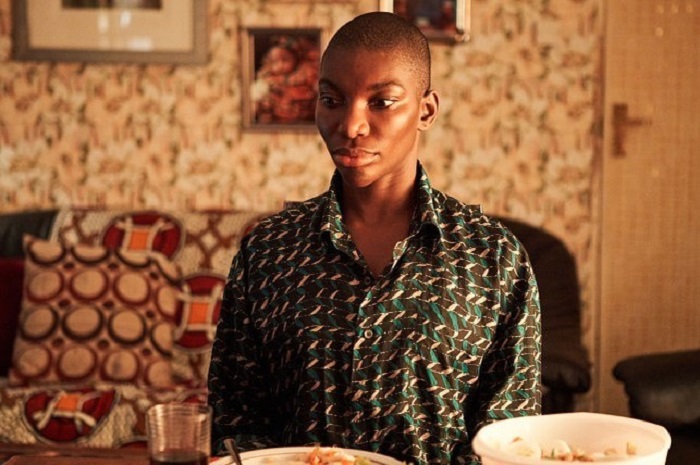
SNOBETTEL Arabella and Kwame have Ghanian parents. How does that influence their fashion choices?
LYNSEY MOORE: “Kwame and Arabella are so focused on expressing themselves and creating their own sense of style that sets them apart from everyone else. In episode 10, Arabella goes to her mother’s house where she chooses to wear a shirt instead of a t-shirt in an attempt to smarten up for a family dinner. Unfortunately there weren’t any formal family events like a wedding providing an opportunity to wear traditional clothing like there was in ‘Chewing Gum.'”
SNOBETTE: On that note, head scarves and styling of one’s hair are a big part of black culture and expression. Was there a learning curve for you to take that in?
“LYNSEY MOORE: “I was very lucky because I learned a lot from working on” Chewing Gum.” Like with any job, you learn something new. For the exercise classes I researched the choices women make. Terry would wear her wig, whereas Arabella chooses a scarf. It’s about showing that people have personal preferences.”
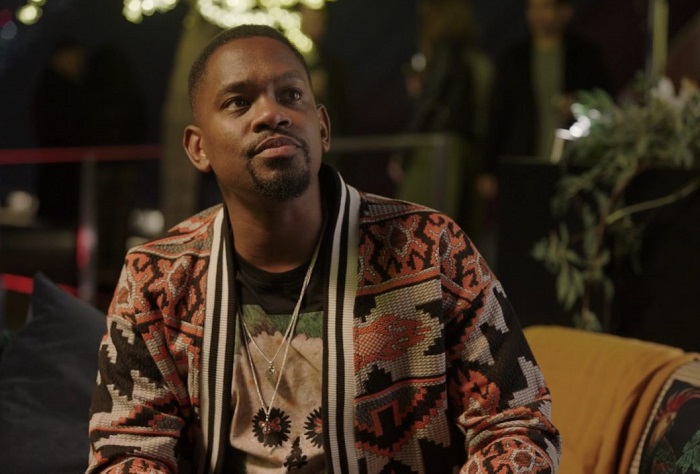
SNOBETTE: “I’m utterly fascinated by the sweater Simon (Aml Ameen) gave Arabella to wear in episode one. She ultimately chooses to take it off and changes into her own Armani sweater when she returns to the office. Was there a bigger message in that moment?
LYNSEY MOORE: “Her wearing Simon’s jacket was scripted. Him giving her his jacket makes him a nice guy. It makes who he is more ambiguous. Every character is flawed. We also wanted something striking and iconic you could see and remember later in the series.”
SNOBETTE: What was the message with Simon’s mistress, Alissa (Ann Akin), who’s wearing a dog collar when she meets Kat (Lara Rossi) and Simon.
LYNSEY MOORE: “We wanted her to be grungy, very East London, different to Kat who’s all about glamour, her wigs, heels and a silky dress. They’re from two different worlds. Alissa is quite domineering. She knows what she wants and takes it. She has a real hold on Simon. She’s not the kind of woman you would expect Simon to go for and that challenges the stereotype of what we think a mistress looks like.”
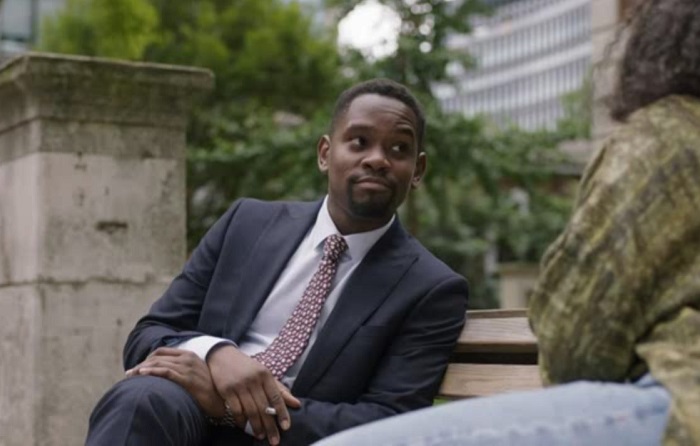
SNOBETTE: Speaking of Simon, in episode eight when he has a conversation with Terry, he’s wearing a DKNY suit. Does that convey something about his income?
LYNSEY MOORE: The characters aren’t wearing designer except for Simon, he’s all about being a London city boy. He wants to look flashy and present an image of success and wealth. He’s living outside of his means. The flat is very nice and swish, but it’s his girlfriend’s flat. She’s the one with money. He wants people to notice him. He’s all about image.”
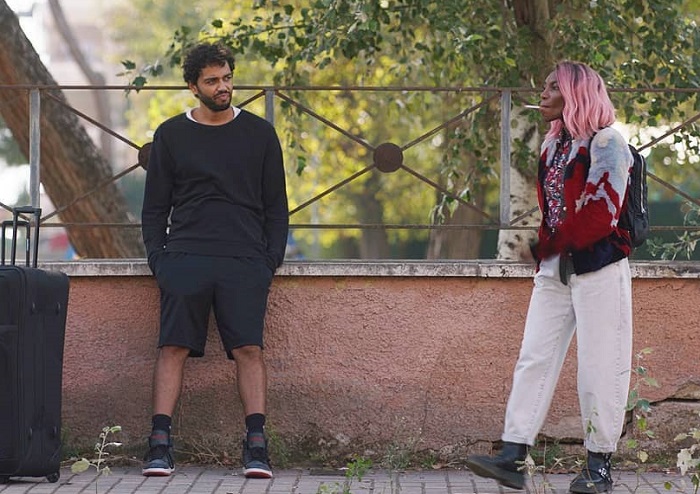
SNOBETTE: As a person who hasn’t been to Italy, it was fascinating to see Biagio (Marouane Zotti) wearing looks seemingly inspired by black American youth culture. Is this a look for young Italians?
LYNSEY MOORE: Biagio was based on someone Michaela met. He was an effortlessly sexy guy. Not really fashionable, just sexy. In Italy, a lot of young guy are wearing tight t-shirts and shorts and going for a very peacock look. Biagio was a complete contrast to that.”
SNOBETTE: While Biagio is a drug dealer, he doesn’t flash his wealth, why is that?
LYNSEY MOORE: “You see his flat, he’s not showy. He’s much more discreet, he’s the kind of person you wouldn’t imagine to be a drug dealer. He doesn’t represent the stereotype, his attitude is very laid back and cool.”
SNOBETTE: In episode seven, Terry celebrates her birthday in an orange bodycon dress. In some ways, it’s difficult to watch her given the conversation she had with Simon earlier in the episode.
LYNSEY MOORE: “It’s Terry’s birthday. For her, ‘It’s all about me. I’m the birthday queen.’ She needs a dress that’s scene stealing and what better than an orange the color of a traffic cone. The fit and how she moves in it is all about capturing attention.
“In the episode, Theo (Harriet Webb), who’s wearing an old crappy t-shirt monopolizes Arabella’s attention which makes Terry jealous, the contrast between the fabulous dress and the nondescript t-shirt amplifies this.
“All the characters are flawed. In the same episode, Arabella locks Kwame in the bedroom. We don’t know if we like Theo. Everybody is presented as human, they all make mistakes.”
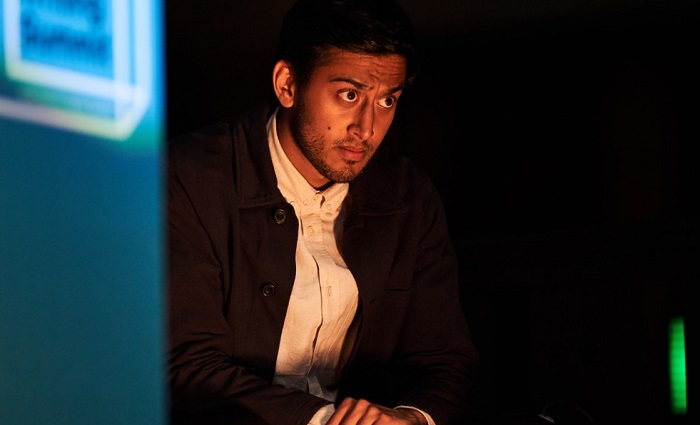
SNOBETTE: During Arabella’s flashbacks, the men she sees are wearing white dress shirts, a color usually associated with good behavior. She also wears Zain’s (Karan Gill) white shirt in episode four. Is there a bigger story at play?
LYNSEY MOORE: “They’re actually pale pink shirts. She sees different people wearing the shirt. The shirt keeps coming back. Again, it’s challenging the idea of what a rapist should look like. There’s often a preconceived idea that a rapist would only wear dark sinister clothing and that’s not reality, it can be an ordinary bloke, it can be anyone including a guy in a pale pink shirt.”
Zain is technically a rapist and it’s about keeping him in the same vein. I chose a similar shirt for Arabella to borrow from Zain as it mirrors the toilet flashbacks of the shirt and acts as a visual reminder to the audience.
SNOBETTE: Most productions have been shut down. What are you doing during this period of downtime?
LYNSEY MOORE: ““Everything has stopped so I’m drawing again, which is lovely, just spending some time being creative. I also have a couple of clients who I style privately throughout the year.”

